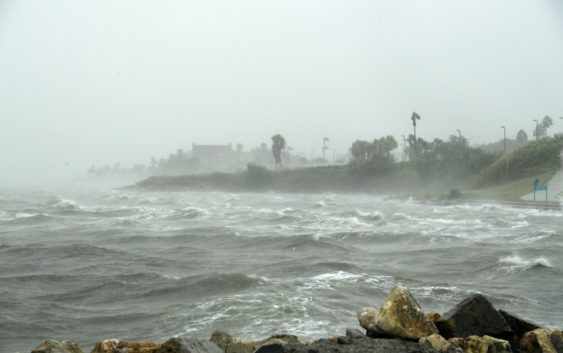- Before and after: See Dubai flooding from space
- No evidence of a tornado in Rock Hill, investigation determines
- Marking 15 years since 19,000 acre wildfire destroyed dozens of homes in Horry County
- 'I am so sorry, but we will do it again' Donald Trump calls off Wilmington rally due to severe weather
- Donald Trump forced to call off Wilmington rally due to severe weather
5 things Texas beachgoers should know before the 2021 Atlantic hurricane season

With summer around the corner, many of you might want to bring out those swimming suits and plan a trip to a South Texas beach. However, in the Gulf of Mexico, storms and hurricanes also get bit by the travel bug this time of year.
Those planning a vacation need to remember that the Atlantic hurricane season runs from June 1 through Nov. 30 – and meteorologists are predicting it will be an active one. The National Oceanic Atmospheric Administration‘s Climate Predication Center expects an above-normal hurricane season (with the Texas freeze storm in February, expect anything).
For 2021, the NOAA expects a likely range of 13 to 20 named storms (winds of 39 mph or higher). Of those, six to 10 could become hurricanes (winds of 74 mph or higher), including three to five major hurricanes (category 3, 4, or 5; with winds of 111 mph or higher). NOAA provides these ranges with a 70 percent confidence (so safe to say it’s time to prepare).
READ ALSO: Here’s what is happening in the Texas Legislature
“Now is the time for communities along the coastline as well as inland to get prepared for the dangers that hurricanes can bring,” NOAA Secretary of Commerce Gina Raimondo said in a release. “The experts at NOAA are poised to deliver life-saving early warnings and forecasts to communities, which will also help minimize the economic impacts of storms.”
With May 23-29 being Hurricane Preparedness Week, Padre Island National Seashore spokeswoman Kelly Taylor gave MySA.com some tips and advice beachgoers should keep in mind if and when they decided to head to the Gulf of Mexico this summer.
- Watch the weather: If a storm is predicting to make landfall, don’t come, Taylor said. You can monitor the National Weather Service and National Hurricane Center websites for forecast conditions.
- Check the Hurricane Plan for the beach or park: In the case that the storm or hurricane is five days away, some beaches and parks might start sending staff to safety and start to shut down areas and facilities, Taylor said. It might be sunny and blue skies the day you travel, but the beach staff is preparing for the possible dangers of the incoming storm.
- Be patient after a storm passes: Some beaches and parks might be closed, even if a storm didn’t pass in that area. Most crews are picking up and removing debris caused by the heavy winds the hurricane might have caused, Taylor said. It can take a few days or sometimes a month for some areas to be cleared, she added.
- Beware of coastal flooding: Low-pressure systems that are in the Gulf of Mexico, even hundreds of miles from the park, can cause coastal flooding on a shore. Water will sometimes reach all the way to the beach sand dunes, causing a shoreline to be closed off because of the standing water. You won’t be able to drive on the beach during this time.
- Rip currents are a thing and very dangerous: Rip currents most typically form at low spots or breaks in sandbars, and also near structures such as groins, jetties and piers. Even on a calm day, beachgoers have to be aware of the rip currents.
The Texas Health and Human Services also recommend purchasing travel insurance (Nerdwallet has a list of how to find the best). Additionally, prepare an emergency supply kit (here’s a link of what you need) and know your evacuation routes.